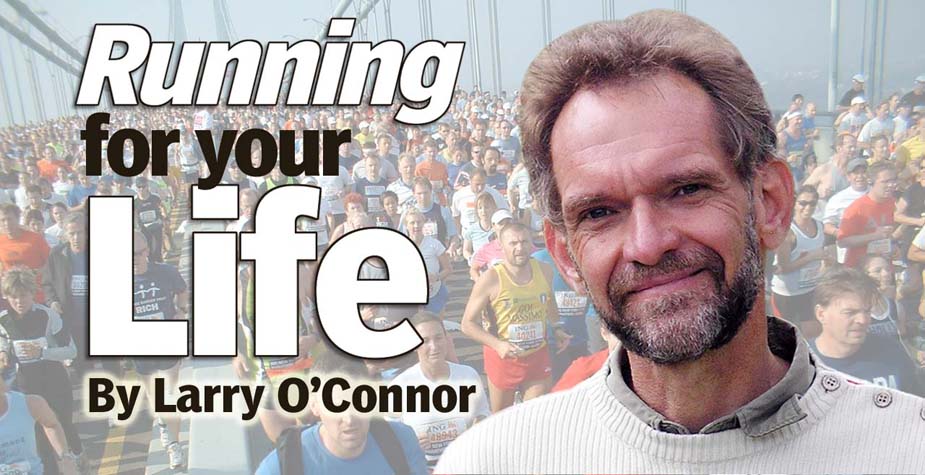Each couple of weeks or so Steamtown Marathon scribe Jim Cummings writes an email update to those running the Oct. 13 race. These witty dispatches – the event is less than seven weeks away – draw attention to such details as the date upon which entry fees will not be refunded, usually because the would-be racer has suffered from injury or been deficient in training. Once past that date, it’s good luck to you.
Truth is any runner can enter a marathon (except Boston). The trick is to enter and finish four hours or under. In other words, to push your inner athlete, to manage pain (because no matter what you do as a non-elite athlete there is going to be pain.)
For beginners, those who are making the leap from recreational running, the occasional half-marathon, fun runs, etc., stepping up to marathon training, is no easy task. And because of that, one-and-done bucket list runners who’ve completed a marathon and then retired makes good sense. There comes a time when pro athletes decide to hang up the cleats or skates. Training to compete in a tough sport at a better than average level is a punishing proposition. The proof is in the pain, almost despite the train.
Thankfully, after 10 weeks of training – that means both stretching and strengthening, rest days, pretty much alternate week long runs – I’m hoping that it’s enough. That’s because I’m actually going to have to delay my long run. I tried on Wednesday (Aug. 28), during an especially humid day, to get it in and managed closer to 15 miles – and significant forefoot pain that well . . .
Okay, it’s now a day after that run (Aug. 29), and it wasn’t great, my dogs, both of them, started with that old pain that I’ve written about here too much by half, so much so that I actually went to a podiatrist who took one look at my orthotics and said, please, they are worn to the hard shells, refurbish them, you’ve been running with little real support, the lift you need, no wonder you’re in pain. I can’t imagine it, really (that was in her eyes); it’s been a helluva morning, sitting at the Dunkin’ drinking sweet coffee and glazed donuts and earlier – on an endless commute to get to the doctor’s did a most unscientific study of the subway car I’m riding in and an average of sixty percent of people around me (I’ve zero energy to read; as I said it’s been a horrid morning) are either wired or are staring dully, screens in their hands.
It’s a down moment. Training will yield a few like this. But I’m on the road. The lifts are in the capable hands of Eddie’s Shoe Repair at Rockefeller Center – they’ll be back to me the morning of Rosh Hashanah (Sept. 4.), Eddie has assured me, which means my long run (20+ miles) won’t happen until the following week. About a month before Steamtown . . .
Next: Running for Your Life: There Oughta Be a Law
